
 The
Church
The
Church

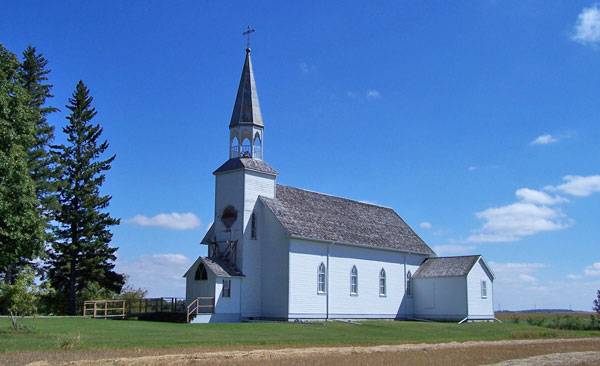
A
landmark in the Cardinal area, it is a fine example of ecclesiastical
architecture in the French and Quebecois classical tradition, as
characterized by its symmetry, large nave and formal tower. The wooden
structure also symbolizes the fierce pride and commitment of
parishioners, who, desiring to establish their own identity and
confident in their community's prospects, persevered with the
challenges of fundraising and church construction even though this
broke with their tradition of attending mass in nearby Notre Dame de
Lourdes.
The Exterior Features
The building sits on an attractive location on the edge of the village
of Cardinal, amid mature trees, grassed grounds and rolling
agricultural fields.
Its external design consists of a square tower, a high, elongated nave
under a gable roof and a pentagonal apse, with a perpendicularly
appended, gable-roofed sacristy.
Tower features include the second-level eyelet windows, a central
stained-glass bull's eye, a pyramidal roof interrupted by a belfry with
pointed arched openings, an octagonal steeple with metal sheathing, and
a finial and ornamented Latin cross.
The modest materials and details include the horizontal wood siding,
cedar-shingled roof, trim and corner boards painted to contrast with
the facades, double entrance doors, and decorative return eaves.
The Interior Features
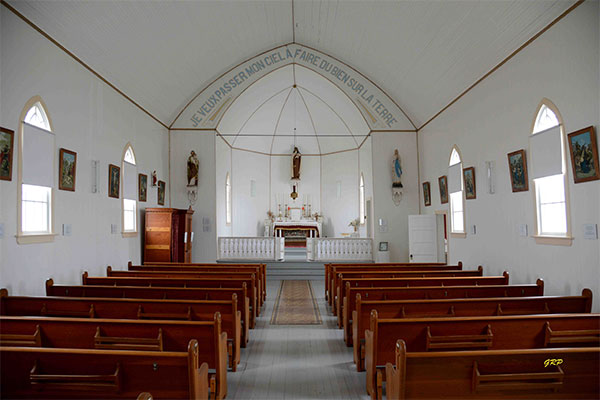
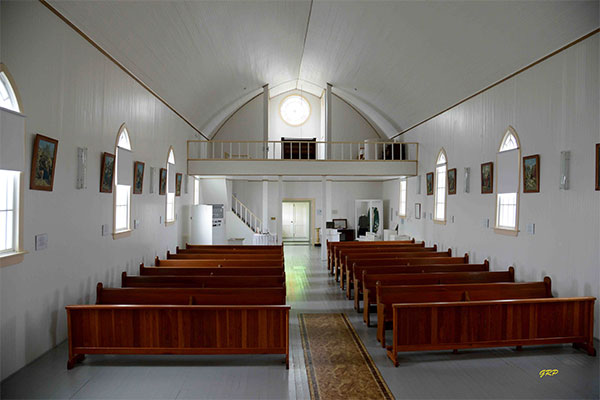
The traditional formal plan is organized by the vestibule, centre-aisle
nave, and sanctuary.
The altar is set behind a large pointed arch inscribed with a banner
and featuring a lowered ceiling converging above a large statue of St.
Thérèse. It has intact wooden communion rails and finishes.
It has plank floors, walls and arched ceilings throughout.
It has fine details and finishes, including the historically accurate
colour palette, simple mouldings and trim, wooden pews, L-shaped choir
loft stairs, plank confessionals and closets.
History
The new village of Cardinal was created in 1905, but the area was
settled in the 1880's, centred on the Parish of Notre Dame de Lourdes.
As the village grew and community identity and pride developed,
citizens wanted their own church. The issue was brought to light when,
in the aftermath of World War 1, the village created its own "Arc de
Triumph" to welcome home its soldiers. A local church would be a
logical next step.
The Chanoines Priests at Notre Dame opposed the idea. They were
supported in their position by the archdiocese. The concern was that it
would diminish attendance at Notre Dame.
In 1926 a group known as the Societe St. Louis was organized to build a
Church. The support of the community was evident in the success of
fundraising activities and in 1927 construction began under the
direction of Alexandre Beaudry and Joseph Schumacher. The church was
dedicated to Sainte Thérèse-de-l'Enfant-Jesus. The altar was
constructed by Francois Blain. The building was ready for use in 1929.
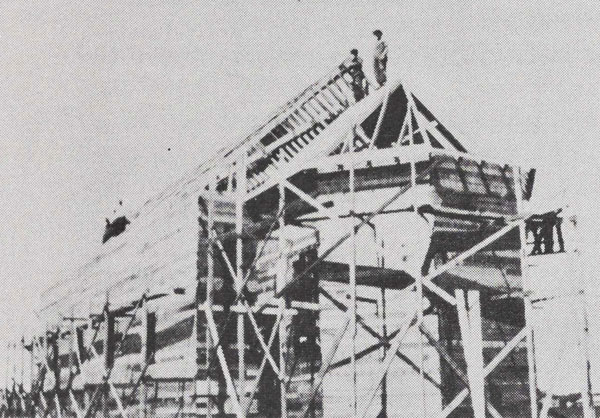
Under construction in 1927
The residents of Cardinal had a church, but due to
opposition from the priest and parishioners of Notre Dame, it was not
blessed and had no priest. A bitter struggle ensued. As an
alternative to having their own priest, the Cardinal citizens appealed
to have services conducted at least in the winter months. After
extensive discussion a compromise was struck. Services would be
provided but the ownership of the chapel would be transferred to
Lourdes. The chapel was blessed on November 17, 1935. The first Mass
was attended by over 250 people. Services during winter months were
held every third Sunday.
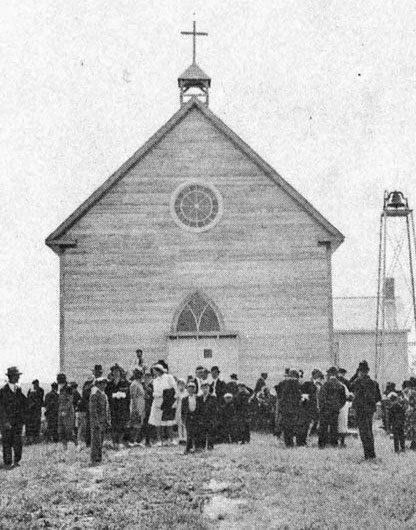
The first mass.
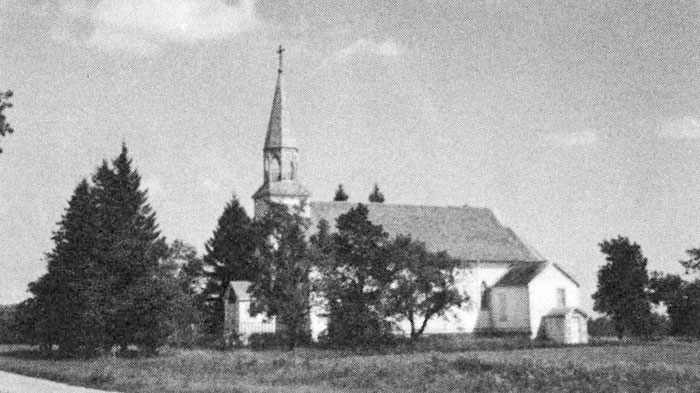
The
church on its earlier site, closer to the street.
Improvements continued with the addition of a Sacristy and a Bell Tower
in 1939, but in 1948 a renewed effort to make Cardinal a parish was not
approved by the Archbishop.
That didn't stop the community from continuing improvements. A basement
was added in 1951 and other renovations undertaken.
Despite determined community efforts, the forces of rural depopulation,
seen across the prairies, was to have its effect. Farms were larger and
families were smaller. Improved roads and reliable vehicles made
shopping in the larger centres attractive, which in turn rendered many
village businesses unnecessary. People moved away and church attendance
could only decline sharply.
The Church closed in 1960 and found new life in the early 1990s when
descendants of the area's early residents mobilized to save it.
It was declared a Municipal Heritage Site. The community and la Société
Historique de Notre Dame de Lourdes undertook an ambitious restoration
project. Restoration of the Chapel began in 1990. Then the building was
moved onto a new foundation and exterior and interior woodwork was
repaired. Continued renovations between 2003 and 2008 were done as part
of the Manitoba Prairie Churches Project.
Today it is open to visitors from May to October. Its collection of
religious artifacts, historical information and photos - and above all
the beautiful building itself, are a tribute to the community.
|
|